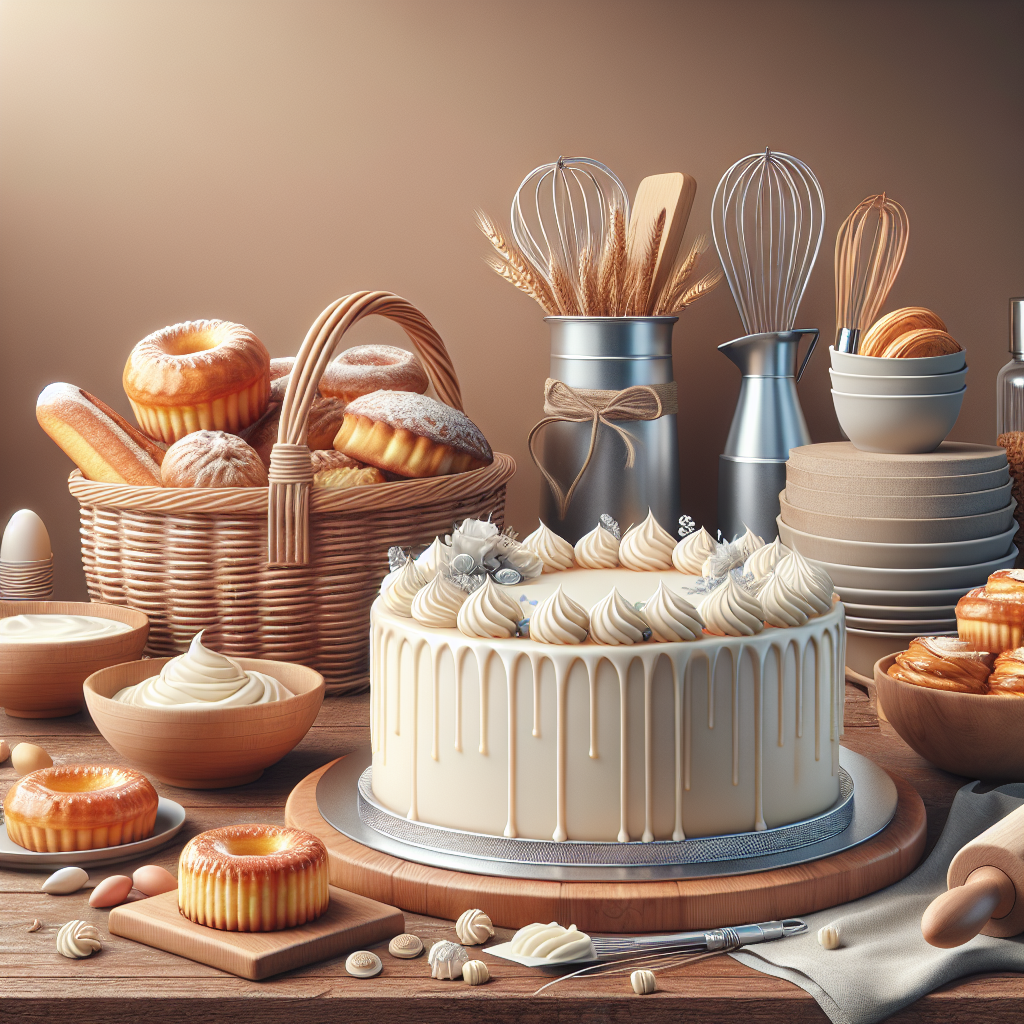Baking is an art, a science, and a beloved tradition in many households. Whether you’re a novice or looking to refine your skills, mastering the essential techniques can elevate your baking game. In this guide, we’ll explore the fundamental practices that lead to fluffy cakes and perfect pastries.
1. Understanding Ingredients
Flour
The backbone of most baked goods, flour provides structure. Use all-purpose flour for versatility, cake flour for a lighter texture, and whole wheat flour for a denser product.
Sugar
Sugar not only sweetens but also contributes to moisture, color, and texture. Granulated sugar is standard for most recipes, while powdered sugar is ideal for frostings and glazes.
Fats
Butter, margarine, and oils add richness and flavor. Butter is especially favored for cakes as it creates a fluffy texture when creamed with sugar.
Leavening Agents
Baking powder and baking soda are vital for creating rise. Baking powder often contains both an acid and a base, while baking soda requires an acid in the recipe, such as yogurt or vinegar.
Eggs
Eggs bind ingredients and provide moisture. They also contribute to the leavening and structure of baked goods. Room temperature eggs integrate better into batters.
2. Mastering Mixing Techniques
Creaming
This technique involves beating butter and sugar together until light and fluffy. This incorporates air into the batter, leading to a lighter cake. Always start with softened butter to ensure a smooth mix.
Folding
Gently combining delicate mixtures, like whipped cream or egg whites, with heavier batters using a spatula. This technique prevents deflation, keeping your cakes airy.
Stirring vs. Beating
Stirring is used for combining dry ingredients or mixing in add-ins; beating incorporates air for a lighter result. Understand when to apply each technique for desired outcomes.
3. Proper Measuring
Weight vs. Volume
For the most accurate results, weigh ingredients using a kitchen scale rather than relying on volume measurements. This ensures consistency, especially with flour, which can be compacted.
Spoon and Level
If you must measure using cups, spoon flour into the measuring cup and level it off with a knife. Avoid scooping directly to prevent excess flour.
4. Oven Management
Preheating
Always preheat your oven for even baking. The temperature affects the rise and texture of baked goods.
Oven Thermometer
Ovens can often be inaccurate. An oven thermometer helps ensure that the baking temperature is precisely what your recipe calls for.
Positioning
Place cakes in the center of the oven for even heat distribution and avoid opening the door too often, as this can lead to temperature fluctuations.
5. Cooling Techniques
Cooling Racks
Allowing cakes and pastries to cool on a wire rack promotes even cooling and helps avoid sogginess.
In the Pan vs. Out of the Pan
Let cakes cool in their pans for about 10 minutes; this allows them to set before transferring them to a cooling rack. For pastries, cool them completely before glazing or icing.
6. Baking Adjustments
High Elevation Adjustments
If you’re baking at high altitudes, adjustments are necessary. Decreasing sugar and increasing liquid can compensate for lower air pressure.
Humidity Considerations
In humid climates, flour can absorb extra moisture. To counter this, add slightly more flour to your dough or batter.
7. Experiment and Explore
Once you’ve mastered the basics, don’t hesitate to experiment with flavors and ingredients. Try different extracts, spices, or add-ins like fruits and nuts for unique variations.
Conclusion
Baking is both rewarding and therapeutic. With these essential techniques, you’ll be well on your way to creating fluffy cakes and perfect pastries that impress friends and family. Enjoy the process, and remember that even experienced bakers continue to learn and refine their skills—every bake is a step toward mastery! Happy baking!

